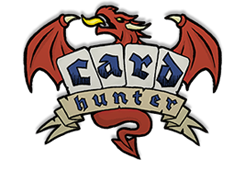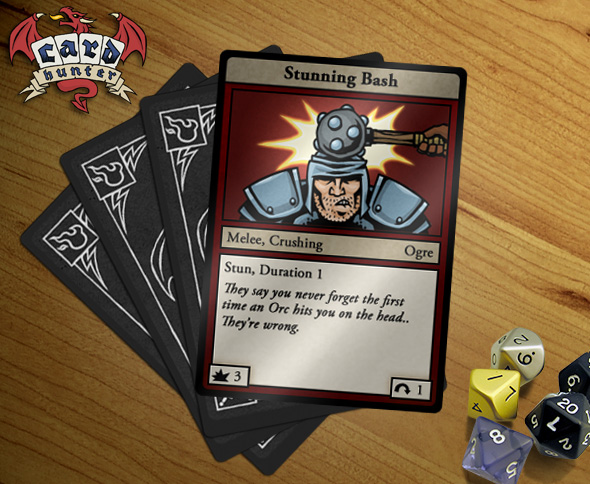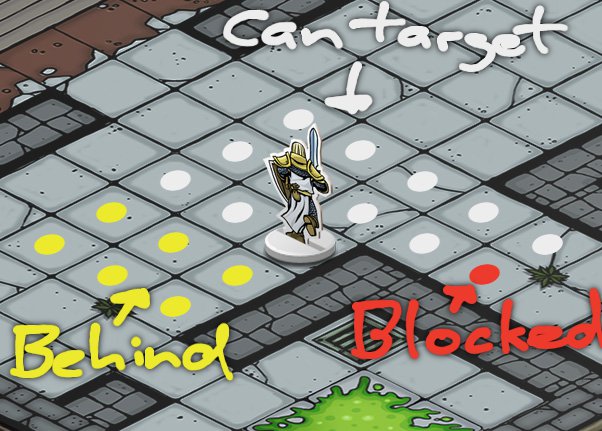There’s a lot of development to discuss in these diaries, but at some stage we should talk about, you know, the game. Like what you actually do in Card Hunter and how it actually works. I’m leaping into that today.
Last week I wrote that Card Hunter is all about cards. That is true, but there are other bits and pieces involved as well. For a start, there’s a board. The board is divided up into squares, and the squares can hold characters, and the characters have health. I’ll let you guess what the function of health is.
Your job is to move characters around on that board and to hit the monsters with various things, causing them pain and shaking points out of their health counters. Eventually, all those health counters reach zero and you win! How do you do that? Why, you play cards of course.
Where do these cards come from? Well, each character draws from their own deck, into their own hand. You – the almighty player- can see and play cards that belong to any of your characters. Those cards generally only affect the character who owns them, though there are some exceptions.
OK, now that we’ve got that out of the way, here’s how it all works. The game is divided into rounds, and each round these things happen in sequence:
- First, we check whether any cards that are in play and have a start-of-round effect. This includes things like Poison, which damages you every round or Stun, which stops you playing cards until a new round starts.
- Next, every character draws cards. These go from their deck into their hand (remember, each character has their own deck and their own hand). So, if you control Lord Ironbutte, Balthazar the Magician and Master Fu, you would draw 2 cards for each of them and place them in their hands.
- Starting with the first player (there are some rules for figuring out who this is, which I won’t go into now), each player takes a turn. In this turn, they can either play a card from one of their character’s hands or pass.
- Repeat step 3 (taking turns to play cards) until both players have passed in succession.
- Now, every character must discard any cards in their hand in excess of 2.
- Start a new round! Repeat until victory.
Pretty simple, right? What kinds of things can you actually do by playing a card? This week I’m just going to talk about attacking, because we’ve already seen an attack card. You know it’s an attack card because it’s red. Also it has a picture of a guy being hit on the head by a mace.
Here it is again:
When you play an attack card, you pick a target to attack. That target has to be in range of the card, where range is measured in squares. You’re allowed to count diagonally. The range of Stunning Bash is 1, shown in the bottom right corner, so you can only use it to attack characters straight in front, to the side or diagonally adjacent to you.
Naturally, you can’t attack targets behind you. In Card Hunter, behind means anywhere that isn’t in front of or directly to the side of you. Also, if you have a attack whose range is greater than one, you can’t shoot it through solid walls. You have to be able to see your target! However, you can shoot through characters, both friends and enemies.
In this picture, the white dots show squares that Sir Tristan could attack with a Range 2 attack. The yellow dots can’t be attacked because they are behind him, and the red dot can’t be attacked because there’s a wall in the way. There are a couple of squares near the acid pool that are both behind him and blocked by a wall so I didn’t bother putting dots on them at all.
This may seem complex, but the game does most of the heavy lifting for you, showing you which characters you can target. Phew!
When you actually do play an attack, assuming there are no defenses or armor, it damages the target. The damage of an attack is shown in the bottom left of the card. Stunning Bash, for example, inflicts 3 points of damage. The type of damage is also listed on the card, like Electrical or Crushing or whatever. Often that doesn’t matter, but sometimes the target has special resistance or defense cards that are specific to that damage type. We’ll get into those later.
That’s probably enough for today. I’ll preview a new card later this week and next week we’ll move on to movement.





August 3rd, 2011 at 11:53 pm
Can’t wait to see some more cards! Sounds awesome and I am in love with the art and the humour :S
August 4th, 2011 at 11:37 am
Very nice!
August 5th, 2011 at 12:01 am
Red my ass, that’s purple!
August 5th, 2011 at 7:41 am
Dard red indeed it is 😉
Nice game! Looking forward playing it as an old Magic veteran